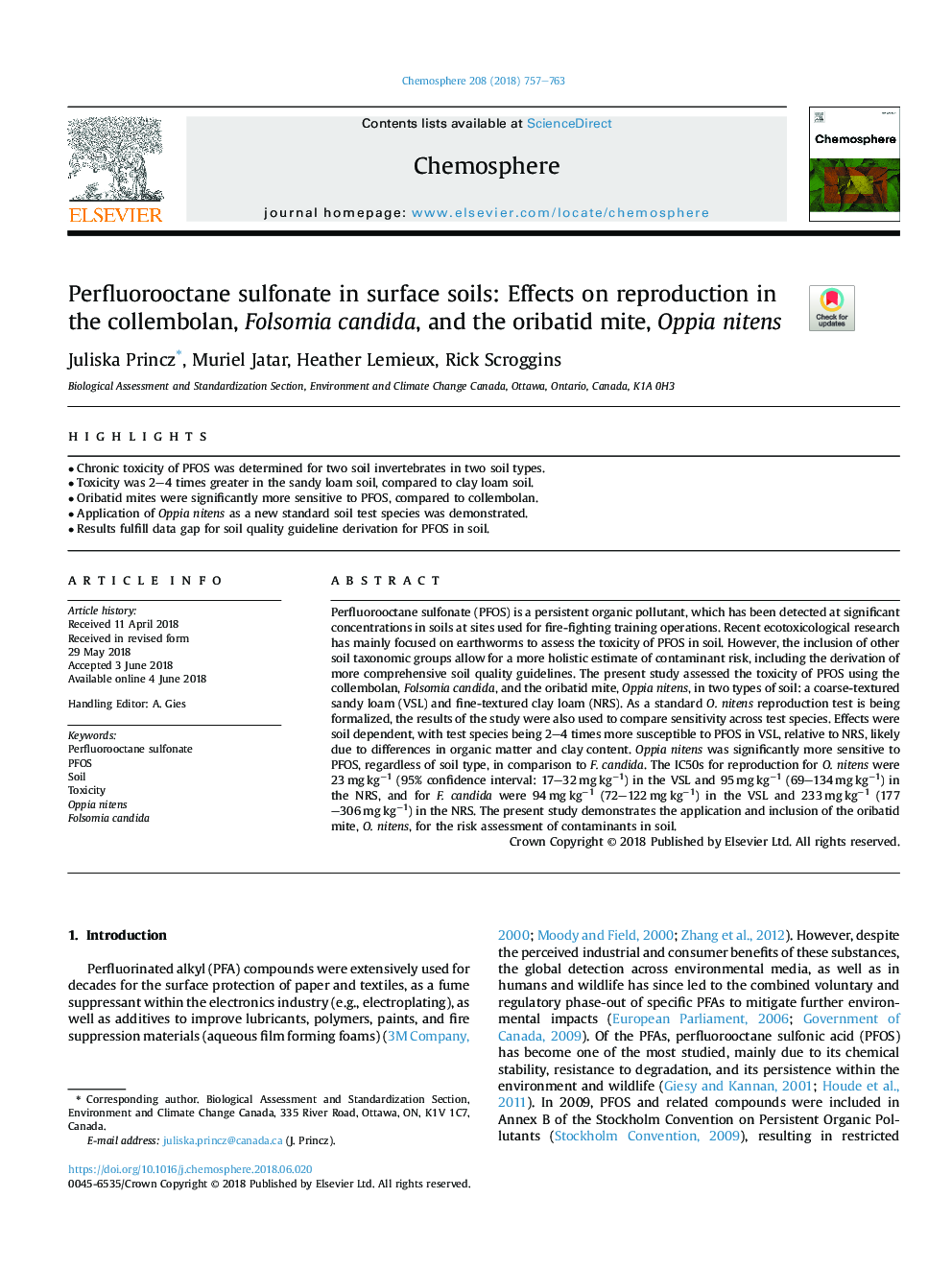| Article ID | Journal | Published Year | Pages | File Type |
|---|---|---|---|---|
| 8850749 | Chemosphere | 2018 | 7 Pages |
Abstract
Perfluorooctane sulfonate (PFOS) is a persistent organic pollutant, which has been detected at significant concentrations in soils at sites used for fire-fighting training operations. Recent ecotoxicological research has mainly focused on earthworms to assess the toxicity of PFOS in soil. However, the inclusion of other soil taxonomic groups allow for a more holistic estimate of contaminant risk, including the derivation of more comprehensive soil quality guidelines. The present study assessed the toxicity of PFOS using the collembolan, Folsomia candida, and the oribatid mite, Oppia nitens, in two types of soil: a coarse-textured sandy loam (VSL) and fine-textured clay loam (NRS). As a standard O. nitens reproduction test is being formalized, the results of the study were also used to compare sensitivity across test species. Effects were soil dependent, with test species being 2-4 times more susceptible to PFOS in VSL, relative to NRS, likely due to differences in organic matter and clay content. Oppia nitens was significantly more sensitive to PFOS, regardless of soil type, in comparison to F. candida. The IC50s for reproduction for O. nitens were 23â¯mgâ¯kgâ1 (95% confidence interval: 17-32â¯mgâ¯kgâ1) in the VSL and 95â¯mgâ¯kgâ1 (69-134â¯mgâ¯kgâ1) in the NRS, and for F. candida were 94â¯mgâ¯kgâ1 (72-122â¯mgâ¯kgâ1) in the VSL and 233â¯mgâ¯kgâ1 (177-306â¯mgâ¯kgâ1) in the NRS. The present study demonstrates the application and inclusion of the oribatid mite, O. nitens, for the risk assessment of contaminants in soil.
Related Topics
Life Sciences
Environmental Science
Environmental Chemistry
Authors
Juliska Princz, Muriel Jatar, Heather Lemieux, Rick Scroggins,
